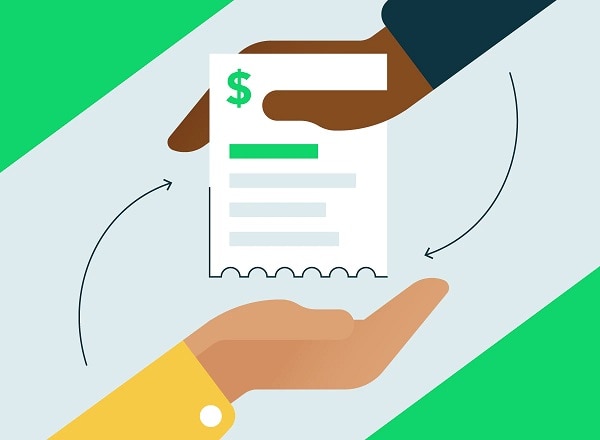

Some version of this statement precedes some of the most uncomfortable interactions with your customers. But invoice disputes don’t need to be the dreaded business reality they’re tagged as. In fact, if you prepare for them and approach them with the right plan and mentality, an invoice dispute can lead to a stronger customer relationship.
A disputed invoice occurs when a customer has a problem with the entire invoice or some aspect of it.
Your customer may take issue with the deliverables, amount invoiced, payment terms, or some other term and condition. Regardless of the customer’s concern, something has led the customer to raise it. This is the dispute, and you need to address it sooner rather than later.
Each customer’s response to a disputed invoice will be different. It depends on the customer, your relationship with the customer, and the circumstances.
If your business has made a genuine billing error on the invoice, there’s an easy fix. Apologize for the error, correct the mistake, and resend the invoice. The dispute goes away as quickly as it appeared.
But more commonly, disputed invoices arise from a disagreement, or at least a misunderstanding between the service provider and customer. Maybe you charged your customer for ten hours of service, and they only wanted eight. Maybe you charged $1,000 for the products, but the customer thought the price was $800. At this point, you have a disputed invoice that might take some work to resolve.
Customers react in a variety of ways when they need to dispute an invoice. The customer may make a partial payment of the undisputed amount on time and exclude the disputed amount. On the opposite end of the spectrum, the customer may refuse to pay anything until the entire dispute is resolved, which may leave you with a cash flow shortage.
How should a customer bring up a disputed invoice? More importantly for you and your business, how should you respond to a customer’s dispute? Before getting into best practices, it helps to understand each party’s legal rights.
There are some laws that remotely touch on invoicing disputes, but they aren’t the first place you should look to understand your rights regarding disputed invoices. First, you need to look at the contract between you and your customer.
What is the contract between you and your customer?
There is an obvious answer to this question if you negotiated a formal agreement with your customer. Examples include a services agreement, supply agreement, distribution agreement, and purchase agreement.
But what if you didn’t make your contractual relationship so formal?
In this case, start looking at the transactional documents between you and your customer. Do your customers’ purchase orders include terms and conditions? Do the invoices you send customers have terms and conditions or terms of sale attached? Do you require customers to agree to basic terms and conditions to set up an account with your business? Even if you didn’t negotiate a long, formal contract with your customer, there’s probably some terms and conditions somewhere.
If there is a contract of some sort between you and your customer, there’s likely some language that specifically addresses invoices:
It’s in this section of your contractual language that you will find how to handle an invoice dispute. Typically, invoice dispute language will lay out a simple procedure to follow in the event that an invoice dispute arises. Common invoice dispute contractual procedures include:
If you don’t see any mention of invoice disputes in the legal documents between you and your customer, don’t stop there. The next place to look is in the general dispute clauses. These are frequently buried at the bottom of contracts under a miscellaneous section. The general dispute clause won’t specifically mention invoices; rather, it describes the procedures to follow for any dispute between the parties.
If you find no formal contract, no terms and conditions attached to a purchase order or invoice, nor anything else that contains legalese, then look to the invoice itself and the law.
Contract law governs invoice disputes, and it changes from location to location. Without a contract in place specifically addressing how invoice disputes should be handled, contract law applies general legal concepts to the invoice dispute. For example, contract law will take a look at the purchase order against the invoice. Certainly, both of these documents include a product or service and a price. They most likely include a payment term, a shipping term, and a few other common elements. Contract law first directs the parties to take each of these documents at face value. Do they agree or conflict? If the invoice dispute falls outside the basic elements of a purchase order and invoice, contract law then looks at supplemental evidence such as how the parties have historically transacted business, standard industry practices, and what promises they made during the negotiation.
This may sound like a reasonable approach to resolving an invoice dispute. However, if you are relying on contract law to resolve an invoice dispute with your customer, it most likely means you are in court, or at least mediation. Court cases and mediation are expensive, and it often means the relationship with your customer is ruined.
To avoid letting a court decide your invoice dispute, make sure to have some basic invoice terms contractually agreed to with your customers before you start business. It could be a formal supply or services agreement, or it might be something as simple as purchase order terms and conditions. Short and simple or long and negotiated, the best way to avoid a legal battle with your customer over an invoice dispute is to get a contract in place before a dispute arises.
The amount of time a customer has to dispute an invoice depends on the legal relationship between the parties. Again, take a look at the legal documents that govern transactions between the parties. Standard invoice dispute contractual language commonly addresses how to dispute an invoice and will help you understand how long a dispute could last.
If your current contracts or terms and conditions don’t mention invoice dispute procedures, it’s a good time to add them. If you add invoice dispute procedures into your terms and conditions before disputes arise, you can manage an invoice dispute on your terms. Here are some best practices for drafting invoice dispute provisions into your contracts and terms and conditions:
If you don’t include a time limit for invoice disputes, contract law determines the time limit through the applicable statute of limitations in your jurisdiction. You don’t want this. The specific time depends on your location, but understand that it will be years, not weeks or months.
5 ways to deal with a disputed invoiceIt’s tempting to get defensive when a customer disputes an invoice. But before you do so, remember it’s your customer. You need customers to run a successful business, and you don’t want to burn bridges. Start by hearing the customer’s complaint. Ask as many qualifying questions as you need answered to look into the dispute internally.
It is not unusual for an invoice dispute to start with an innocent, unintentional error. Errors happen. Decimal points get misplaced, the wrong product ships, the list goes on. When it happens to you, correct the invoice, apologize, and make it right: a quick and simple resolution.
But genuine errors don’t typically lead to drawn out disputes. Your investigation may uncover that your customer is wrong. Now what? Again, don’t jump to defensiveness, but see if you can amicably reach a resolution.
If the customer is in the wrong, don’t start accusing. Help the misguided customer understand why they’re wrong. A noncombative strategy includes a question-first approach. Ask the customer if they still have the quote or other supporting documentation. Ask them to review the quote, and compare it to the invoice. Guide your customer through their own actions so hopefully the customer can uncover their own mistake.
If a customer can admit their own error, great. But what if there’s an error on both sides? Or, what if there’s no obvious error and the dispute is questioned from both sides? That’s when you look for middle ground.
Genuine misunderstandings are a business reality. You thought the customer agreed to X, but the customer thought they agreed to Y. You deliver the invoice for X, and the customer starts a dispute.
Again, don’t get defensive. There’s a relationship to protect. But don’t concede to every customer demand. You have a business to protect. Look for some middle ground. Propose the following question to yourself: What is mutually beneficial to both parties?
Mull over potential answers to that question. Run those answers by some colleagues. Think about it from the customer’s perspective, and then refine your proposal. Once you’ve landed on a proposal that benefits both sides, propose it to the customer. Don’t present it as take it or leave it, but as an option. You might even improve your relationship with responsiveness and flexibility. But the customer might push back. Listen to them and work toward a compromise that works for both parties.
Compromise is great when it works. But compromise takes cooperation from both sides. If you have a customer who won’t budge, you may have to start taking a harder stance.
Escalating is the first of the five steps that includes you taking the position that the customer is wrong, and you aren’t willing to back away from that conclusion. “The customer is always right” has never been a true statement when it comes to getting paid. But escalating doesn’t mean shutting the customer down completely and jumping to your legal rights. It means considering what can be done to appease the customer without adjusting the invoice in dispute.
Escalating may mean getting creative, or literally advancing the dispute through your internal hierarchy. On the creative side, you could offer the customer a future benefit in exchange for the customer dropping the current dispute and paying the invoice. On the literal side, you may need to bring the issue up through your chain of command.
The key to effectively escalating is communicating the escalation to your customer. It shows that you are taking the dispute seriously. You aren’t conceding to the customer’s point of view, but you are including all potential stakeholders in the decision-making process. Even if you can’t reach a meeting of the minds with your customer, escalation shows that you will exhaust all available resources to reach a resolution. Failed attempts to escalate are still meaningful to your customers.
Unfortunately, some disputed invoices require you to enforce your legal rights. When you reach an impasse and your customer refuses to pay, it’s time to get third parties involved.
When you make the decision to take legal action, start with the contract. Follow any required procedures in the invoice dispute or general dispute section. If your customer is afforded a “cure period,” which is just a term for correcting a breach of contract, give the customer a chance to cure. Make sure you read this provision closely because it most likely requires you to give written notice to the customer that they’ve done something wrong (for example, failed to pay an invoice by its due date). If the cure period comes and goes (perhaps after 30 days), continue to follow the contractual procedure for enforcing legal rights. Contracts often include provisions regarding which courts you can file suit in and whether mediation is required before filing a suit. You need to follow each step carefully or you risk being in breach of the contract or having your claim thrown out of court on a technicality.
It’s possible to file a lawsuit without the assistance of an attorney, but it isn’t recommended. An attorney will help you review the relevant contract provisions, and make sure you haven’t missed any of the contractual requirements. If there are no contracts in place or there are potentially conflicting contracts (such as the customer’s purchase terms and conditions and your invoice terms and conditions), an attorney will help you navigate the situation.
If you opt for an attorney, make sure you understand the billing model before engaging. You don’t want to file a lawsuit only to pay more in legal fees than you recover.
Resolving invoice disputes is part of managing your accounts payable. Despite the challenges of dealing with late payments, there may be temptation to ignore disputed invoices for fear of ruining a customer relationship. Don’t give into this temptation.
A disputed invoice doesn’t necessarily mean you will lose a customer. In fact, it might be an opportunity to strengthen your customer relationship depending on how you follow up. When an invoice dispute arises, address it quickly and with an open mind using the five options above. For the sake of your business and the customer relationship, take the lead in resolving invoice disputes.
Recommended for you
What are accounts receivable?
November 5, 2021

How to Calculate Your Accounts Receivable Turnover Ratio
September 25, 2020

How to speed up payments: 20 tips to get clients to pay their bills and invoices faster
We provide third-party links as a convenience and for informational purposes only. Intuit does not endorse or approve these products and services, or the opinions of these corporations or organizations or individuals. Intuit accepts no responsibility for the accuracy, legality, or content on these sites.
**Product information
QuickBooks Live Assisted Bookkeeping: This is a monthly subscription service offering ongoing guidance on how to manage your books that you maintain full ownership and control. When you request a session with a Live Bookkeeper, they can provide guidance on topics including: bookkeeping automation, categorization, financial reports and dashboards, reconciliation, and workflow creation and management. They can also answer specific questions related to your books and your business. Some basic bookkeeping services may not be included and will be determined by your Live Bookkeeper. The Live Bookkeeper will provide help based on the information you provide.
QuickBooks Live Full-Service Bookkeeping: This is a combination service that includes QuickBooks Live Cleanup and QuickBooks Live Monthly Bookkeeping.
1. QuickBooks Online Advanced supports the upload of 1000 transaction lines for invoices at one time. 37% faster based off of internal tests comparing QuickBooks Online regular invoice workflow with QuickBooks Online Advanced multiple invoice workflow.
2. Access to Priority Circle and its benefits are available only to customers located in the 50 United States, including DC, who have an active, paid subscription to QuickBooks Desktop Enterprise or QuickBooks Online Advanced. Eligibility criteria may apply to certain products. When customers no longer have an active, paid subscription, they will not be eligible to receive benefits. Phone and messaging premium support is available 24/7. Support hours exclude occasional downtime due to system and server maintenance, company events, observed U.S. holidays and events beyond our control. Intuit reserves the right to change these hours without notice. Terms, conditions, pricing, service, support options, and support team members are subject to change without notice.
3. For hours of support and how to contact support, click here.
4. With our Tax Penalty Protection: If you receive a tax notice and send it to us within 15-days of the tax notice we will cover the payroll tax penalty, up to $25,000. Additional conditions and restrictions apply. See more information about the guarantee here: https://payroll.intuit.com/disclosure/.
Terms, conditions, pricing, special features, and service and support options subject to change without notice.
QuickBooks Payments: QuickBooks Payments account subject to eligibility criteria, credit, and application approval. Subscription to QuickBooks Online required. Money movement services are provided by Intuit Payments Inc., licensed as a Money Transmitter by the New York State Department of Financial Services. For more information about Intuit Payments' money transmission licenses, please visit https://www.intuit.com/legal/licenses/payment-licenses/.
QuickBooks Money: QuickBooks Money is a standalone Intuit offering that includes QuickBooks Payments and QuickBooks Checking. Intuit accounts are subject to eligibility criteria, credit, and application approval. Banking services provided by and the QuickBooks Visa® Debit Card is issued by Green Dot Bank, Member FDIC, pursuant to license from Visa U.S.A., Inc. Visa is a registered trademark of Visa International Service Association. QuickBooks Money Deposit Account Agreement applies. Banking services and debit card opening are subject to identity verification and approval by Green Dot Bank. Money movement services are provided by Intuit Payments Inc., licensed as a Money Transmitter by the New York State Department of Financial Services.
QuickBooks Commerce Integration: QuickBooks Online and QuickBooks Commerce sold separately. Integration available.
QuickBooks Live Bookkeeping Guided Setup: The QuickBooks Live Bookkeeping Guided Setup is a one-time virtual session with a QuickBooks expert. It’s available to new QuickBooks Online monthly subscribers who are within the first 30 days of their subscription. The QuickBooks Live Bookkeeping Guided Setup service includes: providing the customer with instructions on how to set up chart of accounts; customized invoices and setup reminders; connecting bank accounts and credit cards. The QuickBooks Live Bookkeeping Guided Setup is not available for QuickBooks trial and QuickBooks Self Employed offerings, and does not include desktop migration, Payroll setup or services. Your expert will only guide the process of setting up a QuickBooks Online account. Terms, conditions, pricing, special features, and service and support options subject to change without notice.